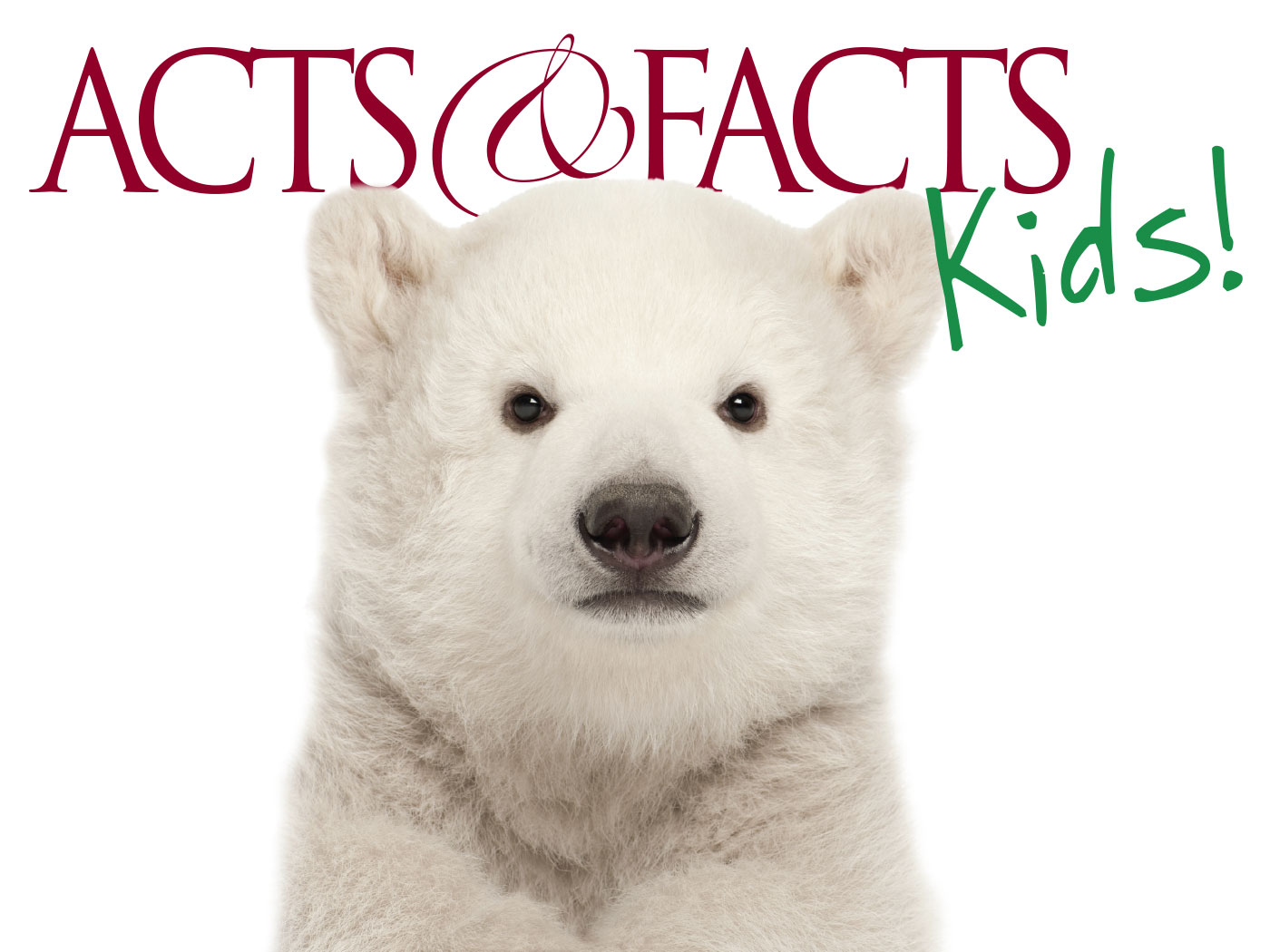When God created the first man and woman, He told them to exercise "dominion over the fish of the sea, and over the fowl of the air, and over every living thing that moveth upon the earth" (Genesis 1:28). This divine stewardship of mankind over the animal kingdom, under its Creator, involves many responsibilities, and has never been withdrawn.
Before discussing this stewardship, however, we need to answer two objections that have been lodged against the Biblical account of the animal creation and its relation to mankind. The first is the charge of skeptics that the two accounts of creation (Genesis 1 and 2) contradict each other, the main "proof" of this charge being the inference in Genesis 2 that Adam was created before the animals, whereas the order of events in Genesis 1 clearly indicates that Adam and Eve were created on the sixth day, after all the animals had been created. The controversial passage reads as follows:
And out of the ground the LORD God formed every beast of the field, and every fowl of the air; and brought them to Adam to see what he would call them: And whatsoever Adam called every living creature, that was the name thereof" (Genesis 2:19).
If there were a real contradiction here as to when the animals were created, it is strange that their Creator, the Lord Jesus Christ, seemed unaware of it! In answering a question about the permanence of marriage, He quoted from both Genesis 1 and 2 together, with no intimation that the accounts were not perfectly complementary.
He which made them at the beginning made them male and female [quoting Genesis 1:26], and said, For this cause shall a man leave father and mother, and shall cleave to his wife: And they twain shall be one flesh [quoting Genesis 2:24] (Matthew 19:4, 5).
In the more detailed account of the forming of man and woman in Genesis 2, there was no need to mention the animals at all until they were to be brought before Adam to be "introduced" to him, as it were, and then named by him. The superficial contradiction is removed simply by noting that there is no distinction in Hebrew between the past tense and the pluperfect tense, the context determining which to use. By replacing the past tense ("formed") by the pluperfect ("had formed") in Genesis 2:19, one can read the verse as follows: "And out of the ground the LORD God had formed every beast of the field...."
Some commentators have argued against this translation, but its legitimacy is verified by Dr. H.C. Leupold, Professor of Old Testament Exegesis at the Capital University Seminary (Lutheran) in Columbus, Ohio, in his masterful two-volume commentary on Genesis:
It would not, in our estimation, be wrong to translate yatsar as a pluperfect in this instance: 'He had molded.' The insistence of the critics upon a plain past is partly the result of the attempt to make chapters one and two clash at as many points as possible" (Exposition of Genesis, 1950, Vol. 1, p. 130).
The two accounts are complementary, not contradictory!
But then, say the skeptics, it is absurd to think that Adam could name all the animals in part of a single day. This argument is also used by those Christians and Jews who believe the Bible in a general way, but who insist that "science" requires us to believe that the days of creation week were long ages instead of literal days.
It cannot be "absurd," however, since God has made it quite plain that the "days" were literal days (note, especially, Genesis 1:5 and Exodus 20:8-11). This particular criticism ignores two very important facts: (1) Adam was much more intelligent than we can even imagine today; (2) he did not have to name every species of animal, but only the distinct "kinds" of animals that were of immediate interest and access in his daily activities.
Adam had been created in the very "image" of the omniscient God, and that image had not yet been damaged by sin and the curse. Scientists today recognize that modern man actually uses only a very small part of his brain's potential, but Adam, with his mental capacity just then created by a purposeful, wise, loving Creator, perhaps could have used it all! He could surely have recognized, almost instantly, the distinctive qualities of each pair of animals as the different kinds passed before him, and then given them appropriate names.
And Adam gave names to all cattle, and to the fowl of the air, and to every beast of the field; but for Adam there was not found an help meet for him" (Genesis 2:20).
Note that the animals so named included only the cattle, the birds, and the field animals. Not included were the "beasts of the earth," the "creeping things" and the "fish of the sea" (Genesis 1:24, 26). Thus the vast multitudes of marine animals and insects, as well as reptiles and amphibians, were excluded. The cattle evidently were the domesticable animals (horses, sheep, cows, etc.) and the "beasts of the field" were animals that would live in the wild in the Garden of Eden and its nearby fields. The "beasts of the earth" were presumably to live throughout the earth and would only have infrequent contact with man, so were not among those to be viewed by him at this time. Nor were the "creeping things," those animals built low to the ground, which, while necessary to a functioning ecology, were not of direct, personal importance to human life. In the context, the purpose of this assignment to Adam by God was both to acquaint him with the animals likely to be associated directly with his normal activities and also to show him that, while he was to have dominion over them, none were qualified to be a "helper like him." Only a woman, also made in God's image, could qualify for this role.
Furthermore, he did not have to name all the species of even this limited number of animals, but only the kinds--which is a much broader term, possibly comparable, in many cases, to our modern taxonomic "family." Although we cannot calculate the actual number of animals involved, it was not inordinately large, and Adam, with his vast innate mental abilities, could surely have named them all in a reasonable part of one day's time.
The animals were created for various purposes. Some would serve for transportation (e.g., horses), some for labor (e.g., oxen), some as house pets (e.g., dogs), and in various other uses. We can derive various spiritual lessons and analogies from ail of them (note Proverbs 30:24-31 and Job 12:7, 8). God also foresaw the entrance of sin, of course, and therefore the future use of some animals for clothing (e.g., sheep, for their wool). Eventually, after the great Flood, God even allowed men and women to eat "every moving thing that liveth" as long as it was not "flesh with the life thereof, which is the blood thereof" (Genesis 9:3, 4). Note also I Timothy 4:4.
Initially, however, human beings were to have lived strictly on "every herb bearing seed, which is upon the face of all the earth, and every tree, in which is the fruit of a tree yielding seed," and land animals were to have lived on "every green herb" (Genesis 1:29, 30). Even animals that are now carnivores were originally herbivores (for that matter, they can still survive on a herbivorous diet, if necessary--as can people!). The sharp teeth and other structures that are now used in eating flesh seem to be "horizontal" variants, or mutants, of structures originally used in gnawing bark, tough roots, and the like. It may even be that God accomplished genetic engineering on the animals to forever remind Adam and Eve of the awful consequences of sin, as suggested also by the introduction of "thorns and thistles" as a part of the curse (Genesis 3:17, 18).
Note that, while people were permitted by God to eat the flesh of animals after the Flood (and thus, by extension, to use them also for clothing or research or other worthwhile purposes in the service of mankind, under God), animals were not given permission to slay people (note, e.g., Genesis 9:6; Exodus 12:28). Although animals are objects of God's loving concern and care (Job 39; Luke 12:6), they are not related to man by evolution, as most present-day animal-rights activists allege. The divine rejection of this age-long heresy of the "great chain of being," of evolutionary continuity with the animals, is perhaps one additional reason why God has made such a clear distinction as this between them.
An additional very significant use of certain animals--defined as "clean" animals--was for sacrifice. The shedding of the blood (representing the life) of an animal upon a sacrificial altar, when presented in faith by its owner as a substitute dying for his personal sins, was accepted by God as an "atonement" (that is, as a temporary "covering" until Christ would come as the "Lamb of God" to take away the sin of the whole world) for his own soul (see Leviticus 17:11).
The efficacy of such atoning sacrifices depended implicitly upon the recognition that death was God's judgment upon sin. The death of any of God's creatures containing the "breath of life" and the "living soul" (Genesis 1:21; 9:22)--and this includes at least all the higher land animals--was therefore not God's natural order in His "very good" original created world (Genesis 1:31). Animal death, as well as human death, entered the world only when man brought sin into the world (Romans 5:12). This is one very cogent reason why Bible-believing Christians should reject the concept of long geological ages with unnumbered billions of animals (even human-like creatures) suffering and dying in the process of evolution, struggling for their existence and seeking to be among the fittest who survive. For, if the speculations concerning death preceded sin, death is then not the penalty for sin, and Christ's death paid no penalty for sin.
Now, although man indeed is still to exercise dominion over the animal kingdom, and though he does indeed have the right to use animals for food and other needed purposes, even when it involves their death, God still cares for the animals, and so should we. This is made especially clear in the divine monologue at the climax of the book of Job, when God--instead of dealing with the mystery of human suffering as debated throughout the previous chapters of the book by Job and his friends--dealt exclusively with the evidences of His creation and His providential care of all His creatures. He "causeth it to rain on the earth where no man is" and "provideth for the raven his food" (Job 38:26, 41). He has "given the horse strength" and enabled the eagle to "make her nest on high" (Job 39:19,27). Christians have no business participating in animal or nature worship, but, likewise, have a clear command to wisely use and manage nature and animal kind.
Finally, in the great Kingdom age yet to come, God says:
In that day will I make a covenant for them with the beasts of the field, and with the fowls of heaven, and with the creeping things of the ground: And I will break the bow and the sword and the battle out of the earth, and will make them to lie down safely (Hosea 2:18). The wolf also shall dwell with the lamb, and the leopard shall lie down with the kid; and the calf and the young lion and the fatling together: And a little child shall lead them.... They shall not hurt nor destroy in all My holy mountain: For the earth shall be full of the knowledge of the LORD, as the waters cover the sea (Isaiah 11:7,9).
* Dr. Morris is Founder and President Emeritus of ICR.













